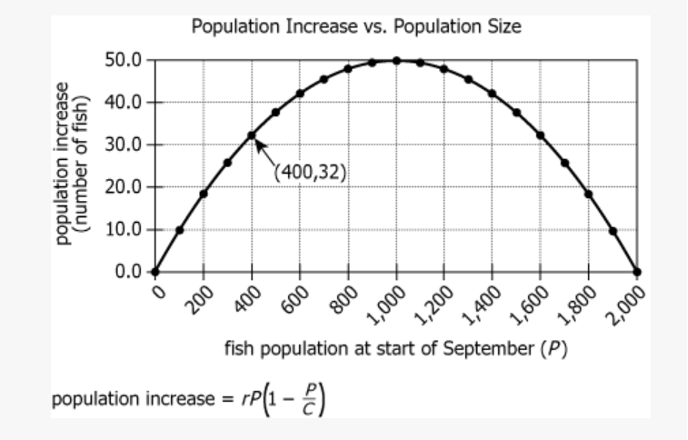题库 / EAOfficialPractice-MSR-79
KJ Reservoir
When the KJ Reservoir (KJR) was built, a single, well-known species of fish was introduced for its role in the new ecosystem. KJR is a popular destination for a public fishing season that extends from June through August each year. Each May 1, the area’s wildlife management team generates an estimate of the number of these fish in the reservoir. The team has determined that the fish’s population should be no less than 1,500 fish at the start of the fishing season—less than 1,500, and the team acquires and releases enough fish to make up the difference.
The fish of this species reproduce once a year in mid-September. Due to environmental factors, of the species’s total population at the end of September, 80% will survive until the following May. It is estimated that KJR cannot support a healthy, reproductive fish population greater than 2,000.
Methodology
To estimate the total number of individuals of an animal species in a particular area, some researchers use the following method:
The researchers first capture a number (M) of individual animals of the species (the capture group) without doing harm. Each is marked, released, and allowed to disperse back into its general population. A number (N) of individual animals are then captured in a second group (the recapture group), some of which will have been captured in both groups, provided both the capture group and recapture group are sufficiently large. Researchers then use the equation below to estimate P, which represents the total number of animals in the area:
(number of fish common to both groups) / N=M / PFish Reproduction
To predict the annual increase in fish population in KJR due to reproduction, the wildlife management team uses the following model developed from past population data from KJR. The model expresses population increase in terms of
- the fish population at the start of September (P)
- the maximum supported healthy fish population (C), and
- a constant chosen to fit the model to the data (r)

On May 1 last year, KJR’s wildlife management team marked the 60 fish comprising the capture group. The recapture group had 100 fish, including exactly 5 from the capture group.
Based on the information provided, which one of the following was the team’s estimate of KJR’s fish population?
1,000
1,200
1,400
1,500
2,000